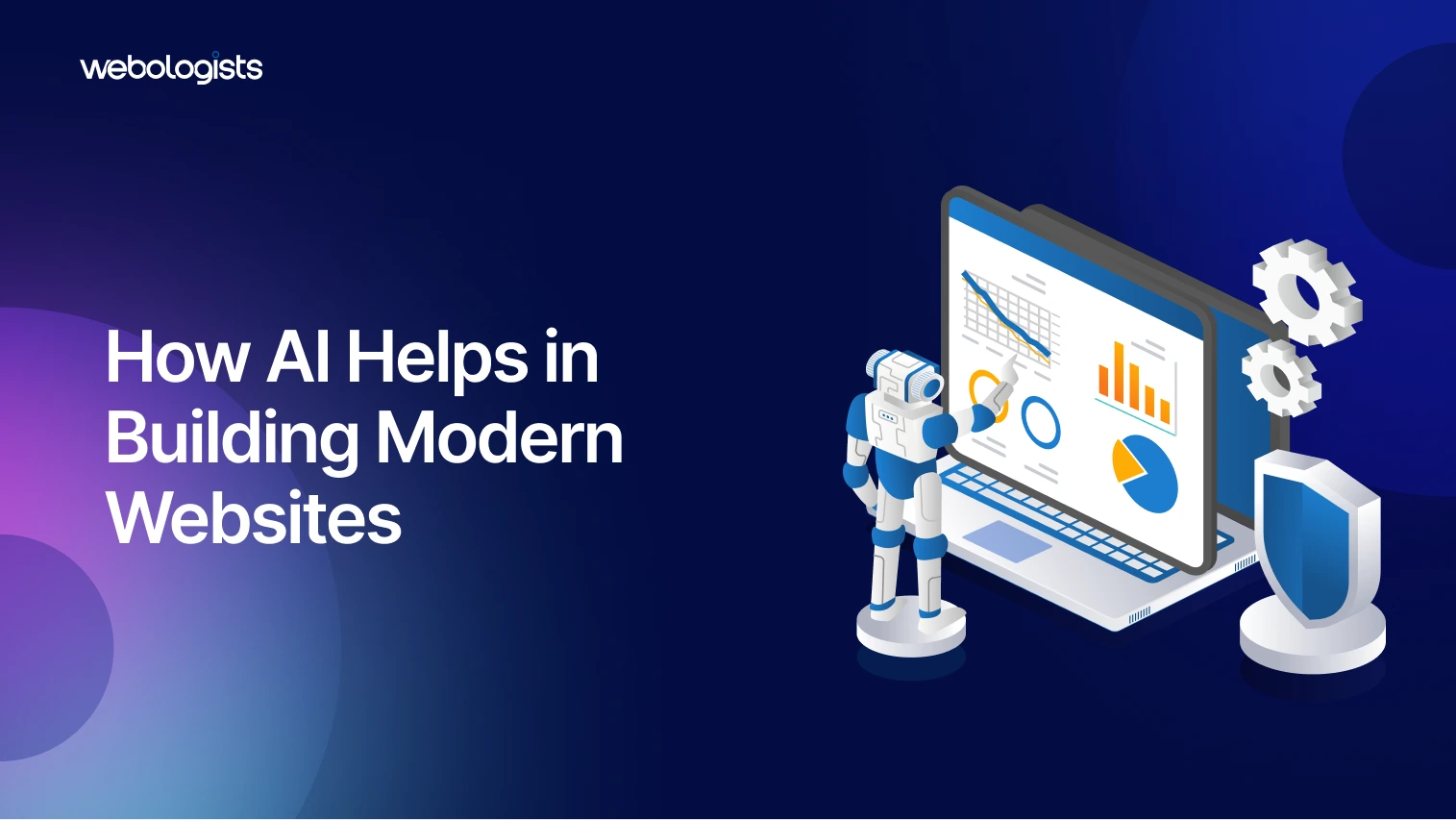
Not long ago, designing for mobile-first felt like a big leap. But technology doesn’t stand still. With foldable screens and 5G networks quickly becoming the norm, businesses face new challenges and opportunities.
The question is no longer: “Is your site mobile-friendly?”
It’s: “Is your site future-ready?“
Responsive web design in 2025 means crafting experiences that are not only visually flexible but also context-aware, tailoring content, navigation, and layout in real time.
Let’s discuss this in detail.
Table of Contents
Why Foldable Screens Are More Than a Trend
Foldable screens might have seemed like a novelty when they first appeared, but they’ve quickly proven to be more than a passing fad. They offer both convenience and innovation, enabling users to switch between compact and expanded views effortlessly.
This evolution changes the game for user interaction. It’s not just about resizing elements anymore—it’s about intelligently rethinking layout flow, hierarchy, and visual cues depending on how users engage with their screens.
If your website isn’t optimized for these fold transitions, users may face broken layouts, misplaced buttons, or hard-to-read text. That friction can damage your brand’s credibility and drive visitors elsewhere. By adopting responsive web design strategies tailored for foldable devices, you stay ahead of user expectations and technological web development trends.
The 5G Advantage: Faster Speeds, Higher Expectations
5G isn’t just a speed upgrade; it’s a shift in user behavior. With lightning-fast connectivity, users now demand richer content, instant loading, and smoother interactions. This means high-definition video, real-time data syncing, immersive visuals, and even interactive features like AR are not only possible; they’re expected.
But increased speed brings higher expectations. If your site loads slowly, feels clunky, or lags on a 5G connection, users may assume it’s outdated. The opportunity here is huge: leverage 5G to create dynamic storytelling experiences and frictionless journeys. This only occurs if your site is built responsively and performs efficiently.
Redefining Responsive Web Design in 2025
The definition of responsive has expanded far beyond shrinking elements to fit smaller screens. It’s now about creating thoughtful, seamless user experiences that adapt gracefully to how people interact with their devices in real life. Here is a closer look at some of these
Fluid layouts
Your layout should stretch, shrink, and morph to fit any screen—whether it’s a traditional desktop, a folded smartphone, or an ultra-wide tablet. Think of it as digital water: your site should flow naturally into any container.
A one-size-fits-all menu doesn’t cut it anymore. Navigation must reshape itself for how users hold and use their devices. Foldable screens, for example, may call for a split layout, while phones in portrait mode might demand collapsible, thumb-friendly buttons.
Mobile web design first
Users are overwhelmingly mobile-first. That means your design should prioritize fast load times, large readable fonts, touch-friendly buttons, and uncluttered interfaces. The mobile experience isn’t the backup, it’s the front line.
Responsive Web Design Techniques That Work
Understanding responsive design means more than resizing elements. It’s about crafting an experience that feels intentional, intuitive, and elegant—no matter the screen or speed. Here are some of the most effective responsive web design techniques that top-performing websites use today:
Flexible visuals
Images and videos should scale fluidly across devices without compromising clarity. Use CSS techniques like max-width: 100%, employ next-gen formats like WebP or AVIF, and implement responsive image attributes (srcset, sizes) to tailor visuals for different screen resolutions.
Advanced media queries
Don’t limit yourself to viewport width. Use media queries that target screen orientation, resolution, and for foldable devices, even hinge position and device state. This allows your layout to adjust dynamically, whether a device is folded in half or expanded into tablet mode.
Touch-friendly design
On mobile devices, users interact with their fingers, not a mouse. Design large, easy-to-tap buttons, avoid hover-only interactions, and space out clickable elements to prevent accidental taps. Consider mobile-specific interactions like swipe gestures and pull-to-refresh.
Progressive loading
Instead of loading everything at once, prioritize what users need first. Deliver critical content immediately, then lazy-load secondary elements as users scroll or as bandwidth permits. This strategy improves perceived speed and reduces abandonment rates.
Responsive typography
Text should scale naturally with the screen size. Use relative units like em or rem instead of fixed pixels, and consider viewport-based sizing (vw, vh) for more fluid text scaling. Combine this with appropriate line lengths and spacing for optimal readability.
Performance optimization
Fast sites aren’t just about speed—they’re about trust. Compress images, minify CSS and JavaScript, and use content delivery networks (CDNs) to reduce latency. This is particularly crucial in a 5G world where users expect everything to load instantly.
These responsive web design techniques aren’t just good practice—they’re necessary in building responsive website apps that deliver seamless, cross-device experiences.
The Rise of the Responsive Website App
Websites are now expected to act like full-fledged applications. They need to be fast, interactive, and seamlessly integrated across all devices. This shift is being driven by technologies like Progressive Web Apps (PWAs), hybrid platforms, and responsive website apps, which blur the line between traditional websites and native mobile apps.
So, what does this transformation mean for your business?
- Offline functionality: Users expect your website to work—even when they’re offline or dealing with patchy network coverage. This is especially critical for global audiences and mobile-first users on the go.
- Consistent experience across devices: Whether someone visits your site on a desktop, a tablet, a foldable phone, or even a wearable screen, the interface should feel the same—familiar, smooth, and intuitive.
- Gesture-friendly navigation: Swipes, taps, pinches, and drag gestures are now standard ways users interact with content. Your site should be designed to accommodate these behaviors with responsive, fluid interactions and animation transitions.
Responsive web design services are the backbone of this movement. They ensure that your digital presence delivers the kind of modern, app-like experience users expect—without forcing them to download anything or commit extra storage space. It’s fast, elegant, and frictionless—everything a forward-thinking business needs to stay competitive in the web space.
How to Prepare Your Site for What’s Next
Future-proofing your site starts with a thorough assessment. Sit down with your team, web developer, or digital agency and dig deep into the following questions:
Is our layout truly responsive—or just reactive?
A reactive site may adjust dimensions, but true responsiveness includes adaptive content, fluid grids, and reflowing elements that feel natural across all devices.
Have we tested how our site behaves on foldable phones and dual-screen devices?
Simulate various fold states to see if menus collapse properly, images scale appropriately, and interactive elements stay accessible.
Are we leveraging 5G capabilities to deliver faster, richer content?
Think beyond static pages: can your site support dynamic features like real-time chat, interactive maps, or AR/VR experiences without lag?
Do we use a modern responsive web design framework that supports modular updates?
Frameworks like Tailwind CSS or Bootstrap 5 can help you introduce new features or layouts quickly—without overhauling your entire codebase.
Is our mobile web design focused on conversion, clarity, and performance?
Every button, form, and call-to-action must be touch-optimized, load quickly, and guide users effortlessly to their next step.
Once you’ve assessed where you stand, take action:
- Create a foldable device test suite to review key pages in multiple fold states.
- Optimize media delivery using CDNs, modern formats like WebP/AVIF, and lazy loading.
- Redesign conversion funnels with a mobile-first lens—prioritize thumb-friendly elements and simplified navigation.
- Update your UI kit using a scalable design system so future updates are modular and low-friction.
By turning insights into concrete upgrades, you’ll position your site for long-term success in a rapidly evolving digital environment.
Final Thoughts
The internet waits for no one, and neither does your audience. The brands that succeed will embrace flexibility, performance, and human-centered design. So audit your current setup, experiment with the tools and techniques outlined here, and never stop optimizing. Because the web of 2025 won’t slow down and neither should you.
Partner with a trusted web app development company like ours that specializes in responsive design for tomorrow’s devices. From foldable-friendly interfaces to 5G-ready performance, we’ll help you build a site that doesn’t just adapt, but excels.
Get in touch with us today!




